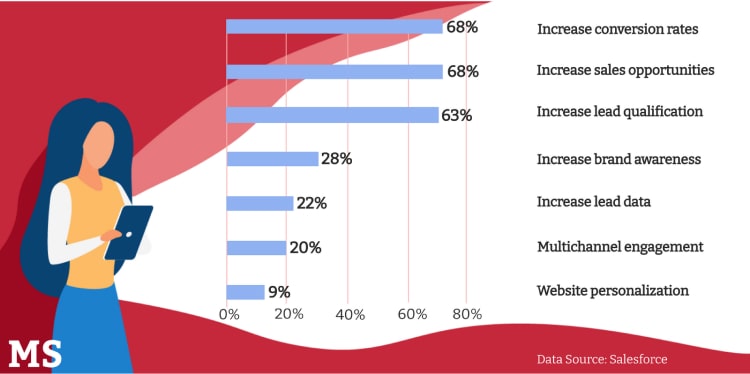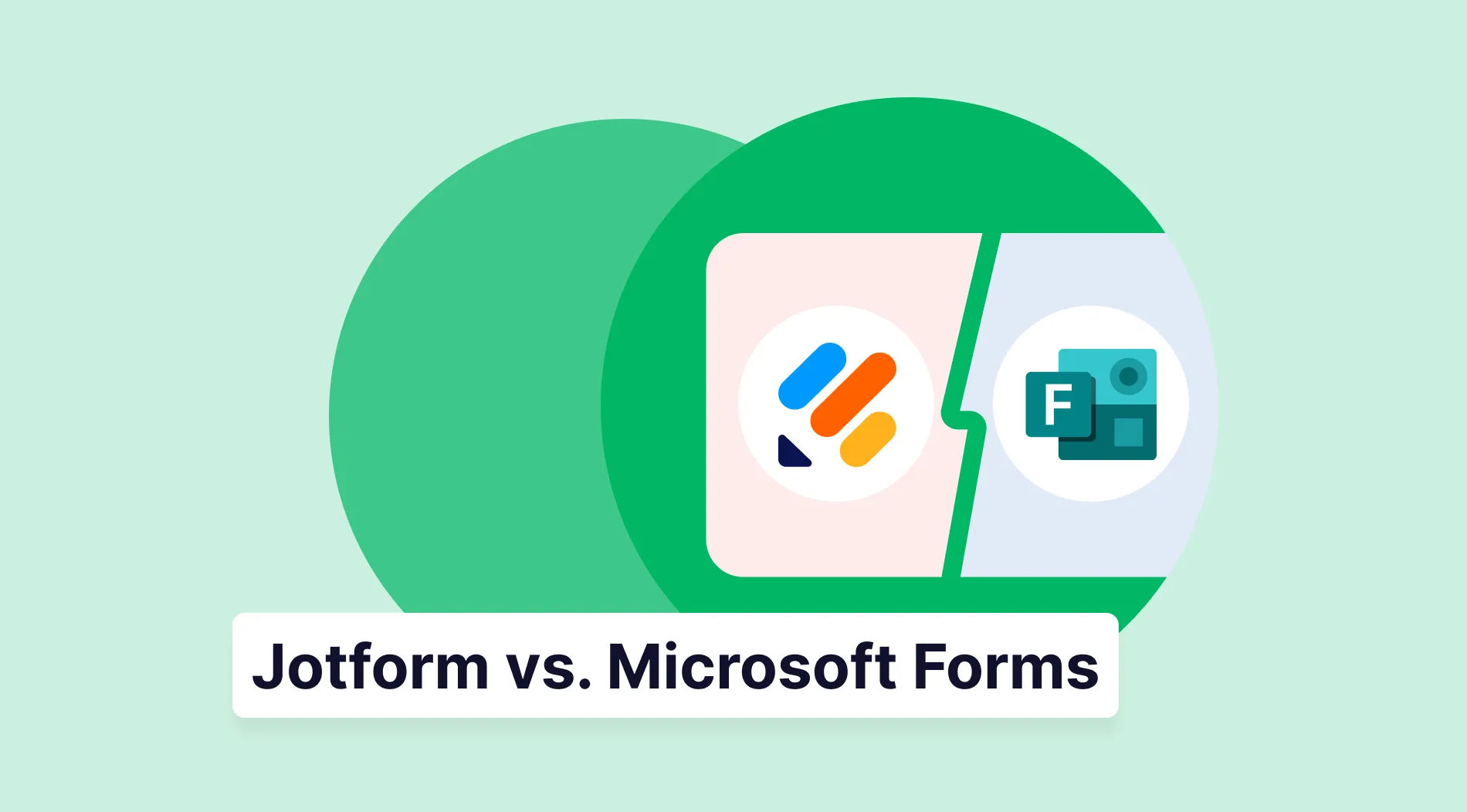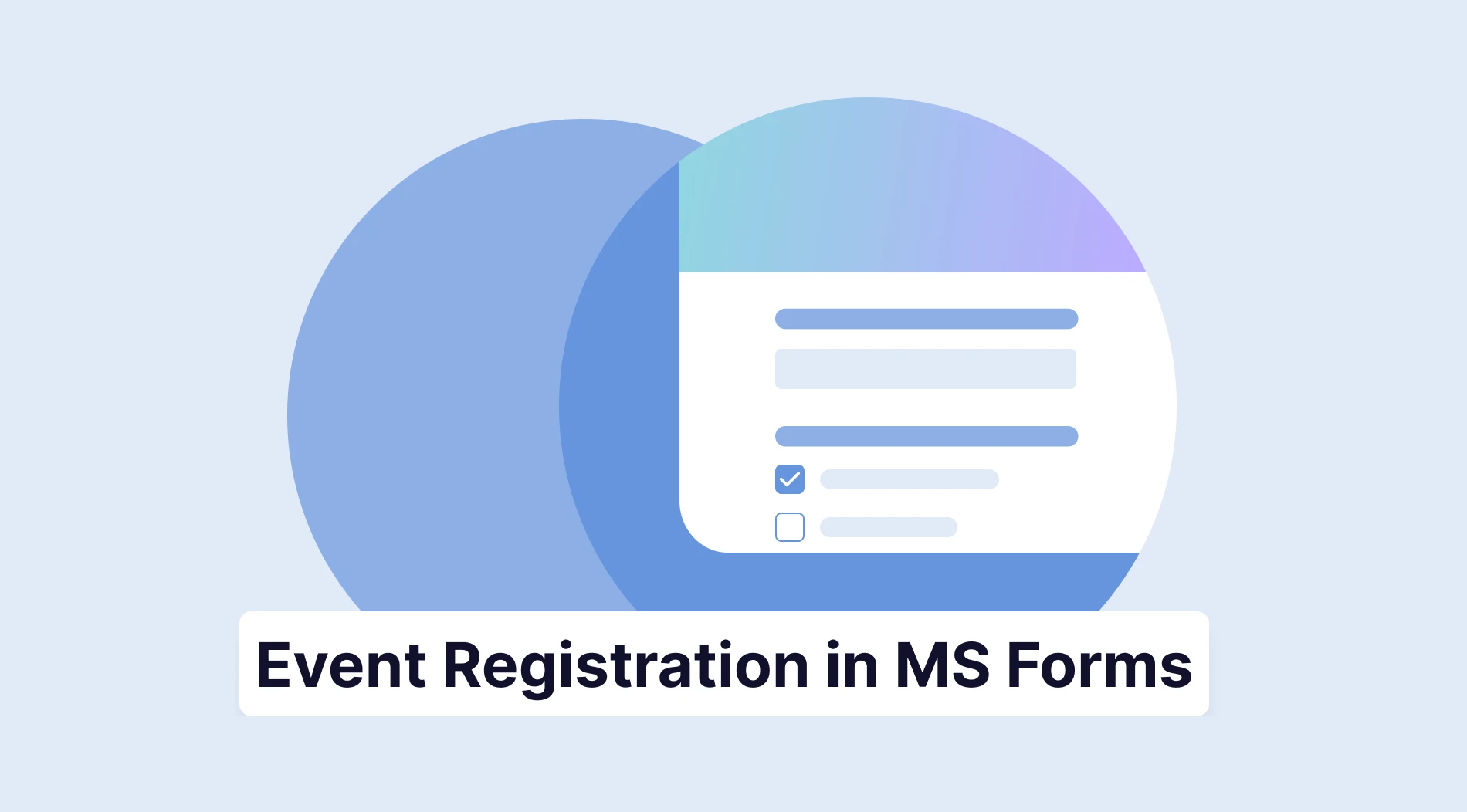Each lead has the potential to become a customer with proper nurturing. But, as every B2B marketer and salesperson knows, there is more to this than meets the eye. Building relationships with leads and generating actual sales can be challenging.
So how does one go about this? Read our article to find out.
The complexity of B2B sales leads
Lead generation is a core process for any B2B sales team. A lead is a contact who has the potential to become a client.
Because B2B purchases typically require a lengthier research process compared to other purchases, B2B companies need to stay in touch with potential customers as they move through the different phases of the customer journey. Successful B2B marketers have processes in place to continuously generate new leads and connect with new potential customers.
Lead generation strategies are an effective tool for meeting sales goals and achieving sustainable growth.
The lead generation process can look different from one B2B organization to another. A wide range of strategies is available for connecting with B2B buyers at the beginning of their buying journey, from cold calling to inbound marketing.
While most B2B organizations have a lead generation process in place, not all marketers are getting the results they’re hoping for because few prospects end up making purchases. There are a few reasons why the conversion rate remains low:
- You might fail to identify the right prospects and spend time nurturing low-quality leads that aren’t a good match for what you offer.
- Your sales team might not meet the expectations of potential customers, for instance, by failing to communicate regularly or failing to deliver personalized content.
- Prospects don’t understand how your solution can address their unique pain points because you’re not taking the time to learn more about your leads.
- You’re not delivering the right information to help prospects move through the sales pipeline.
The biggest challenge B2B marketers are facing is that prospects prefer to conduct independent research and want to interact with a salesperson later in the buying journey. Potential solutions include building a stronger online presence and delivering a hybrid experience that allows leads to consume digital content and connect with business-to-business sales representatives via their preferred channel.

12 Tips for converting B2B sales leads into paying customers
Applying the following tips will help you build a more robust lead generation process, deliver a better experience, and boost your conversion rate.
1. Use lead scoring
Scoring your leads allows you to identify the prospects most likely to make a purchase. With lead scoring, you’re assessing the sales readiness of each lead.
You can adjust your nurturing strategy based on a lead’s score. A prospect who is closer to making a purchase will be receptive to a conversation about pricing, while a lead with a lower score will need broader information to learn more about your product.
Below is a visual depicting the main purpose of lead scoring & nurturing:

Image source: MarketSplash
2. Try having a face to face conversation
Connecting with prospects in person can make B2B businesses feel more human and personable. Establishing this initial connection can be difficult since prospects tend to engage in independent research, resulting in the sales rep having only 5% of the prospect’s time during the buying process.
You can stand out by introducing in-person meetings or video calls early in the process, for instance, by adopting prescriptive selling and having your sales team interact with prospects to build customized packages.
3. Have a marketing funnel
A marketing funnel corresponds to the different steps qualified leads take before purchasing. While each prospect’s journey is unique, you can use analytics to uncover trends and pivots that help a lead move on to the next stage of the funnel.
Here is how you can structure your marketing funnel:
- Focus on SEO and inbound marketing to target traffic from potential prospects. At this stage, the information you deliver should be broad and reflect the pain points most potential customers experience.
- Structure your website to encourage content discovery with a strong internal linking hierarchy, search tools, and an online knowledge repository. Don’t hesitate to explore different content formats like videos or podcasts.
- Use social media and newsletters to establish an initial connection with prospects and get them to consume relevant content regularly as they move through the sales funnel. Once you have a prospect’s email address, you can use a series of emails to educate them about what you offer.
- Track engagement with a customer relationship management platform to identify potential buyers who are actively researching a potential purchase and provide additional opportunities for interacting with your brand, such as downloading a white paper or signing up for a webinar.
- You can then move on to the next stage of the conversion process by offering a meeting or video call with a sales representative.
4. Optimize your web forms
Web forms are a powerful tool for connecting with prospects and gathering data that will help you deliver a personalized experience. You’ll get more out of web forms if they’re easy to use.
Remember that prospects might fill these forms out on mobile, which means you need to optimize these pages to load quickly. Consider allowing autofill to help prospects save time.
You should also limit the information you ask prospects to share or make some fields optional. It’s important to build trust and make prospects feel comfortable. A form builder tool, like forms.app, can help you create multi-functional web forms that will get you leads and turn them into customers.
5. Use a clear call to action
Calls to action are crucial for closing deals. Your marketing team needs to craft strong calls to action that are eye-catching and compelling to get a prospect to move to the next step in their journey after consuming a piece of content. Here is how you can write better calls to action:
- The call to action should reflect where the prospect is in their journey. Don’t encourage them to schedule a sales call if they’re conducting initial research.
- Don’t be too pushy, but don’t hesitate to create a sense of urgency. You can, for instance, encourage prospects to perform an action to get a deal.
- Make calls to action stand out. Use white space, colorful buttons, and large fonts to make these elements pop.
.jpg)
Image source: MarketSplash
6. Listen to your customers
Getting feedback from current customers can help you improve your lead generation and nurturing process. You can use surveys to get a better idea of the kind of experience customers had during their first purchase and whether or not your sales team met their expectations.
It is important during these conversations to not only be listening actively to what they are saying but to also employ empathic listening. You want your customers to know you care and that this is about more than just closing another deal to you. It is about forming a long-lasting relationship.
7. Create incentive
Your marketing team needs to give prospects a reason to progress in their buying journey and eventually make an actual purchase. There are different ways of creating an incentive for your audience:
- You can take a value-based approach, which is great for budget-conscious customers. Emphasize pricing, discuss how your product helps customers save money, and encourage prospects to take action to secure a discount.
- You can also position yourself as a partner for growth who will help buyers achieve their long-term business goals by recommending the best solutions and offering ongoing services.
- Draw attention to what differentiates your B2B organization from competitors. Do you offer better customer service? Do your products have a feature that competitors don’t offer?
- Personalize your incentives. Ask about the unique pain points a prospect is experiencing and connect them to specific features and perks you can offer to show how your solution can solve their problems.
8. Align your marketing & sales efforts
With omnichannel B2B sales being the new standard, your marketing and sales teams need to work closely together. You need to offer a seamless experience as prospects move from independent online research to interacting with a salesperson.
Using a CRM platform is a great way to provide your sales team with insights into the marketing content that a prospect has consumed, or it can provide your marketing team with important sales insights. You also need to achieve consistency with the information you share or the branding you use.
9. Talk to the right people within the prospective company
Buying processes are becoming more complex. On average, a B2B buying decision involves six to ten people. You might see a low conversion rate when sales pitching because you’re not interacting with the right people. You should ask prospects if they’re responsible for making the buying decision and get the contact information of other decision-makers involved early in the nurturing process.
10. Don’t make leads wait to engage
Prospects typically compare different vendors as part of their buying journey. If you wait too long before engaging with a lead, the chances are that a competitor will beat you and schedule a sales call before you reach out to a prospect.
Build a flexible sales funnel where prospects have multiple opportunities to interact with your sales team. A tool like an online chat channel can be a great way to establish an initial contact without pressuring prospects.
11. Use social proof
Social proof can be a powerful argument. You can present social proof via reviews, testimonies, user-generated content, referrals, and case studies. Case studies are a great way to help prospects learn more about your solutions while delivering concrete numbers that show the kind of results they can expect.
User-generated content (UGC) can be a great way to increase sales. Nowadays, people are more likely to believe your customers than they are you. So get your already loyal customers talking and sharing content surrounding your business.
12. Have a killer sales pitch
A great sales pitch should present your product or service as a solution that makes sense for the prospect’s needs. Here’s how you can use sales pitches to close deals:
- Introduce the sales pitch at the right moment. You can start with a soft sales pitch at the end of the first sales call and use a stronger sales pitch during subsequent calls.
- Tailor your sales pitch to each prospect. You can, for instance, sum up the pain points they have shared with you and summarize how your solution can help.
- Try replacing the traditional sales pitch with a question. Ask your prospect what it would take for them to make a purchase today.
- Sum up the deal you can offer for budget-conscious prospects and give the prospect a deadline for securing this price.
When pitching to customers it is important to keep in mind that your end goal is to close the deal. You have to think about the various factors that may make this deal not go through and how to solve those.
Conclusion
Making improvements to your lead generation and nurturing process will help you get more sales. It’s also important to keep looking for ways to improve your strategies as things evolve.
Some of the top challenges B2B marketers faceSum today include complex decision-making processes for customers, information overload, and prospects with high expectations when it comes to personalization.
Following the tips and tricks we have outlined above will help your B2B business to overcome these challenges and meet their sales goals (maybe even ahead of time).



